- 1-Importance-of-Cooling-Down-After-Jumping
- 2-Step-by-Step-Cool-Down-Routine
- 3-Benefits-of-Proper-Cooling-Down
- 4-Common-Mistakes-to-Avoid-When-Cooling-Down
- 5-Real-Life-Experience-and-Trampoline-Zone-Recommendations
1. Importance of Cooling Down After Jumping
After an intense jumping session, whether on a trampoline or during other physical activities, knowing how to properly cool down after jumping is essential. Cooling down helps your body transition gradually from high energy exertion to a resting state, minimizing muscle stiffness and preventing dizziness or cramps.
Jumping exerts significant stress on muscles and joints, especially the knees and ankles. Without a proper cool down, waste products like lactic acid can accumulate, leading to soreness and delayed recovery. Incorporating a deliberate cool down routine promotes circulation, helping nutrients reach fatigued muscles more efficiently.
1.1 Why Cool Down Matters Specifically After Jumping
Jumping is a high-impact activity that quickly raises heart rate and body temperature. The sudden stop without cooling down may cause blood to pool in the legs, which can cause faintness. Cooling down gradually reduces heart rate and allows muscles to relax safely.
2. Step-by-Step Cool Down Routine
Implementing a structured cool down routine is straightforward but must be done mindfully. Here’s a detailed approach on how to properly cool down after jumping:
2.1 Gradual Decrease in Activity
Begin by slowly reducing the intensity of your jumping or movement. Transition into gentle bouncing or walking for 3 to 5 minutes. This eases the cardiovascular system back to its resting state.
2.2 Stretching Key Muscle Groups
After light activity, focus on stretching the muscles most engaged during jumping, such as calves, quadriceps, hamstrings, and lower back. Hold each stretch for 20 to 30 seconds without bouncing. This enhances flexibility and helps prevent stiffness.
2.3 Deep Breathing and Relaxation
Incorporate deep, controlled breathing to aid relaxation and oxygenate muscles. This step also helps calm the nervous system after exertion.
2.4 Hydration and Nutrition
Replenish fluids lost through sweating to support muscle recovery. Consuming a light snack with protein and carbohydrates within 30 minutes can further enhance muscle repair.
3. Benefits of Proper Cooling Down
Taking time to cool down properly offers multiple advantages:
3.1 Reduced Muscle Soreness
Cooling down reduces lactic acid buildup, lowering the likelihood of delayed onset muscle soreness (DOMS) after jumping.
3.2 Faster Recovery
Improved blood circulation during cool down accelerates nutrient delivery and waste removal, speeding recovery.
3.3 Injury Prevention
Properly stretched and relaxed muscles are less prone to strains or sprains, especially important after high-impact activities.
4. Common Mistakes to Avoid When Cooling Down
Despite its simplicity, many make errors during cool down:
4.1 Stopping Abruptly
Jumping straight into rest without gradual activity reduction can cause dizziness or muscle tightness.
4.2 Neglecting Stretching
Skipping stretches misses an opportunity to maintain flexibility and relieve muscle tension.
4.3 Ignoring Hydration
Failing to rehydrate impairs recovery and may cause cramping.
5. Real Life Experience and Trampoline Zone Recommendations
Jessica, a regular trampoline enthusiast, once ignored cooling down after a vigorous jumping workout and experienced tight calves and ankle discomfort the next day. After learning how to properly cool down after jumping and incorporating stretching and hydration from trusted resources like Trampoline Zone, she noticed improved recovery and better performance.
Trampoline Zone offers a range of products and expert advice designed to support safe jumping routines, including cooling down tools like foam rollers and stretch guides. For those looking to optimize their jumping sessions and recovery, exploring these resources can make a significant difference.

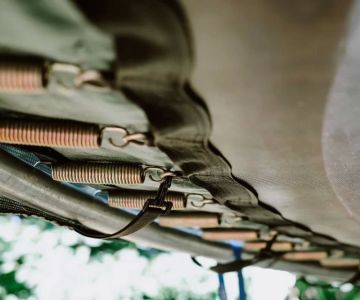

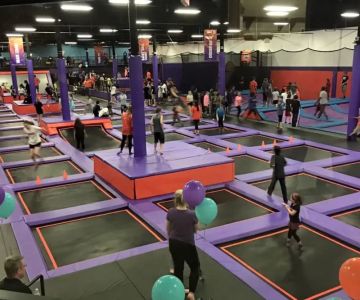
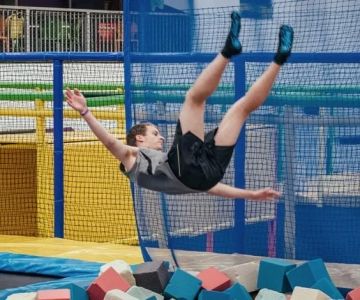


 Pump It Up Lake Forest Kids Birthday and More4.0 (280 reviews)
Pump It Up Lake Forest Kids Birthday and More4.0 (280 reviews) Urban Air Trampoline and Adventure Park4.0 (349 reviews)
Urban Air Trampoline and Adventure Park4.0 (349 reviews) Church Street Plaza4.0 (731 reviews)
Church Street Plaza4.0 (731 reviews) Fun City Adventure Park3.0 (162 reviews)
Fun City Adventure Park3.0 (162 reviews) Riki Tiki's Indoor PlayGround4.0 (35 reviews)
Riki Tiki's Indoor PlayGround4.0 (35 reviews) Urban Youth Park - South Bay4.0 (107 reviews)
Urban Youth Park - South Bay4.0 (107 reviews) Are Trampoline Parks Safe for Kids? Essential Guide for U.S. Parents
Are Trampoline Parks Safe for Kids? Essential Guide for U.S. Parents How Often Should You Replace Trampoline Springs? Tips for Proper Maintenance
How Often Should You Replace Trampoline Springs? Tips for Proper Maintenance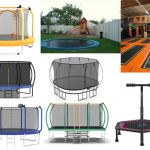 How Much Is a Trampoline? A Detailed Guide to Trampoline Costs and Buying Tips
How Much Is a Trampoline? A Detailed Guide to Trampoline Costs and Buying Tips Bounce Techniques for Stronger Legs: Effective Exercises and Tips
Bounce Techniques for Stronger Legs: Effective Exercises and Tips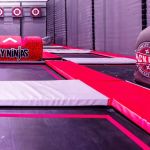 Essential Music Gear for Trampoline Dance: Complete Guide
Essential Music Gear for Trampoline Dance: Complete Guide Fun STEM Experiments Using Trampolines to Spark Curiosity and Learning
Fun STEM Experiments Using Trampolines to Spark Curiosity and Learning